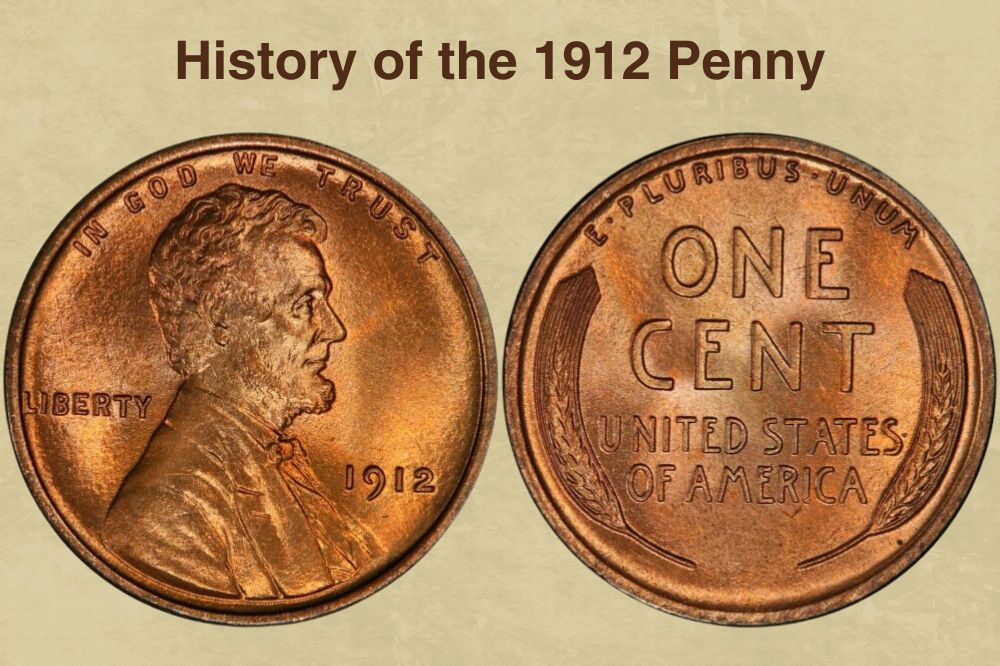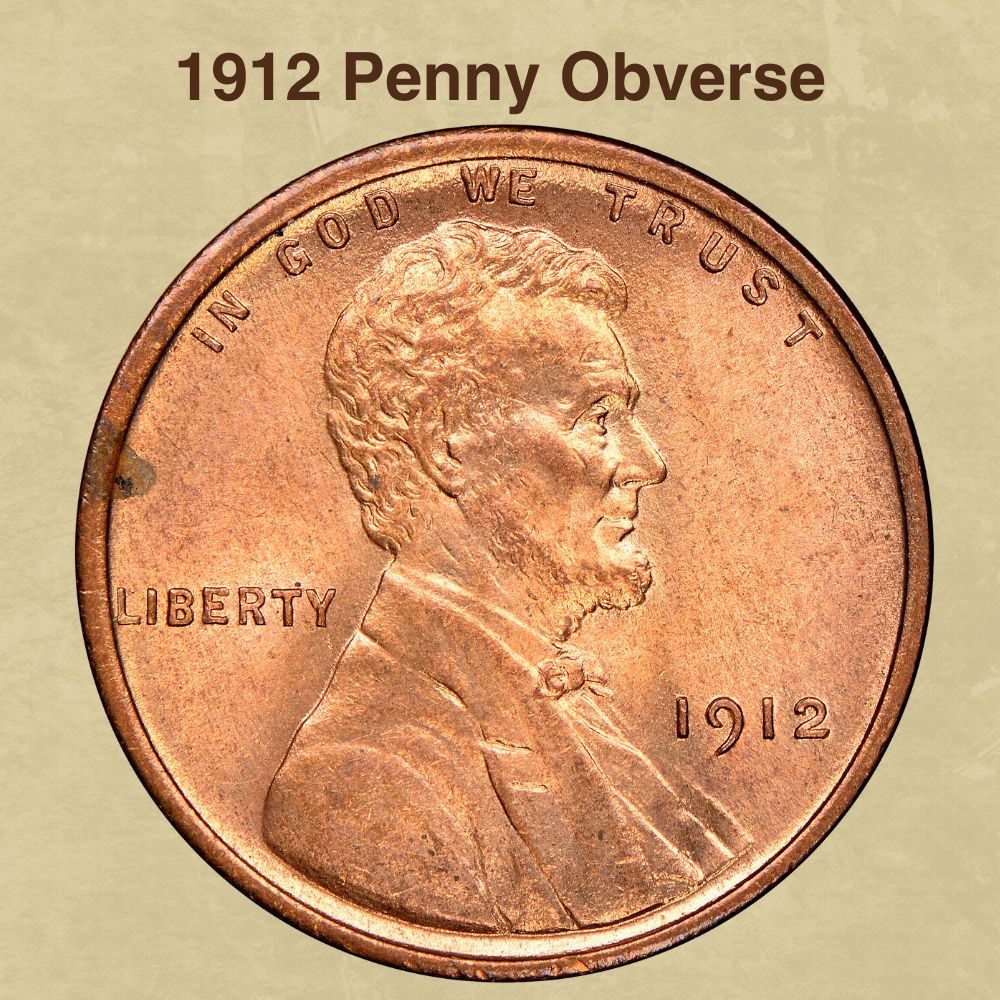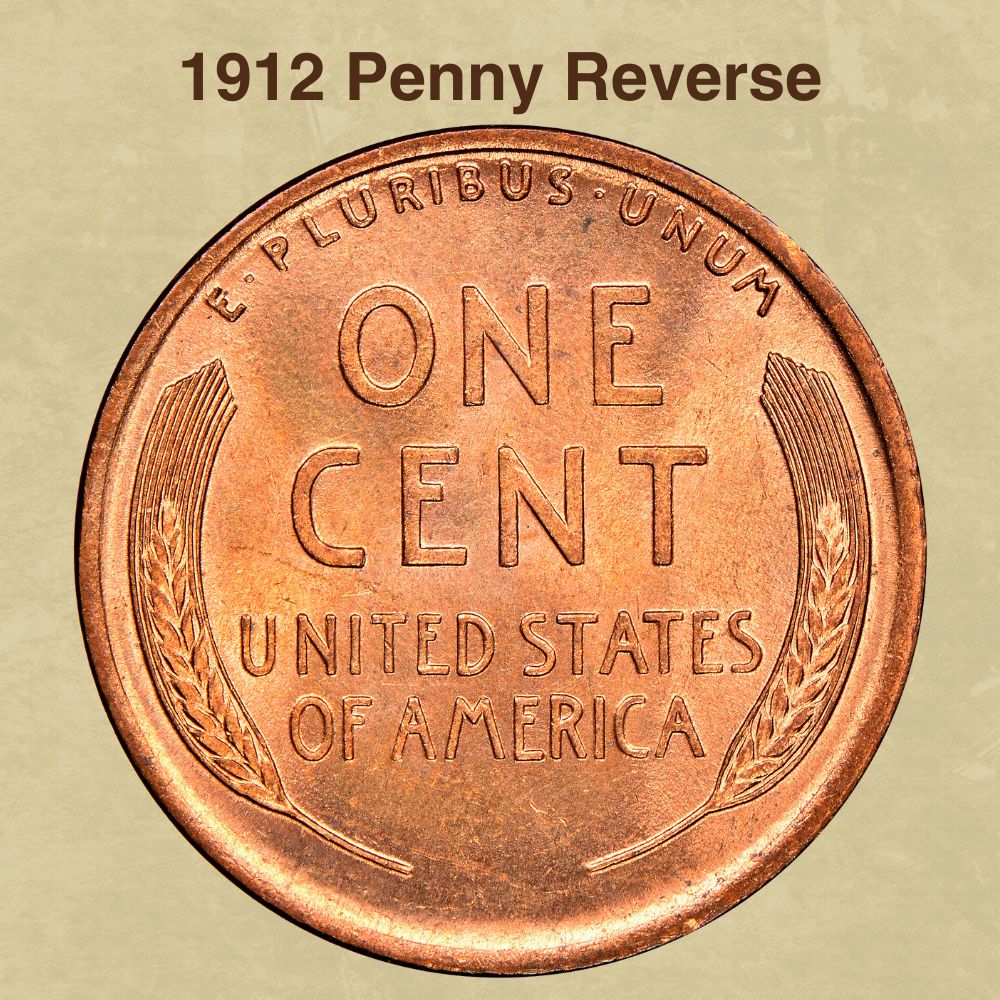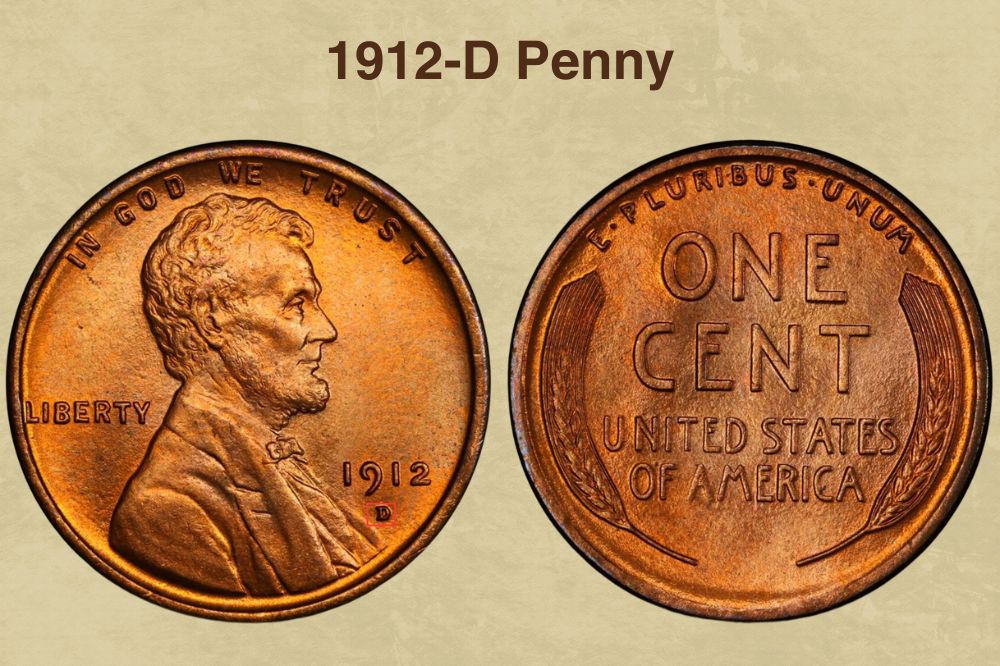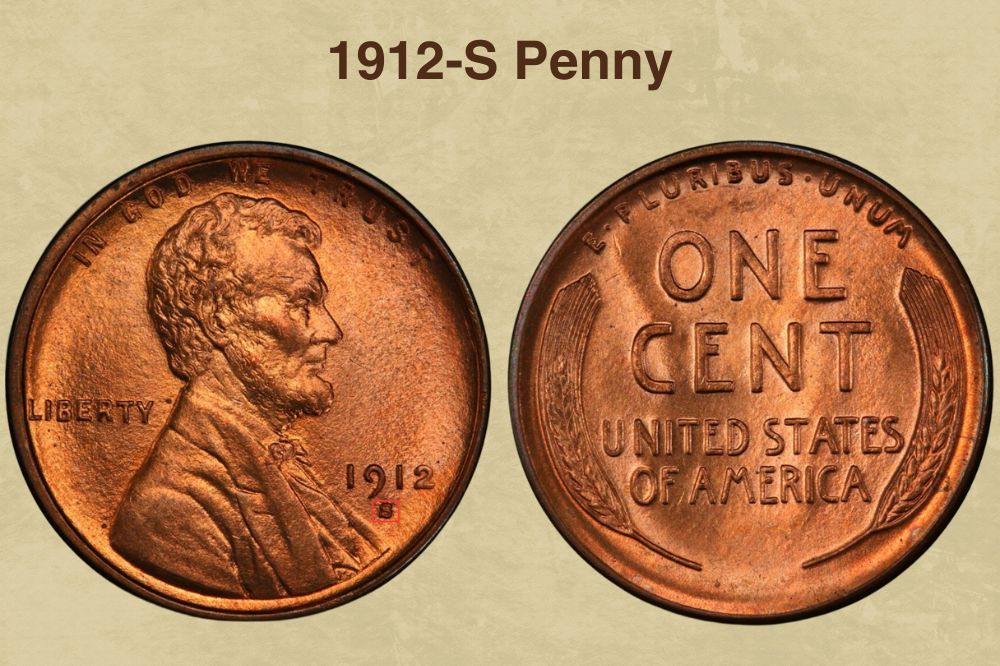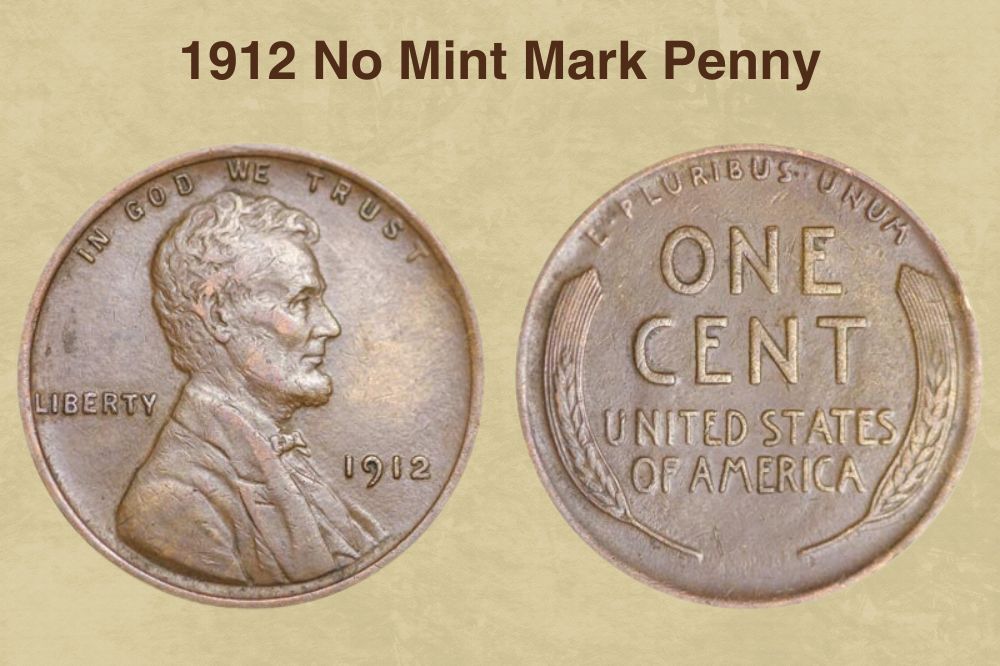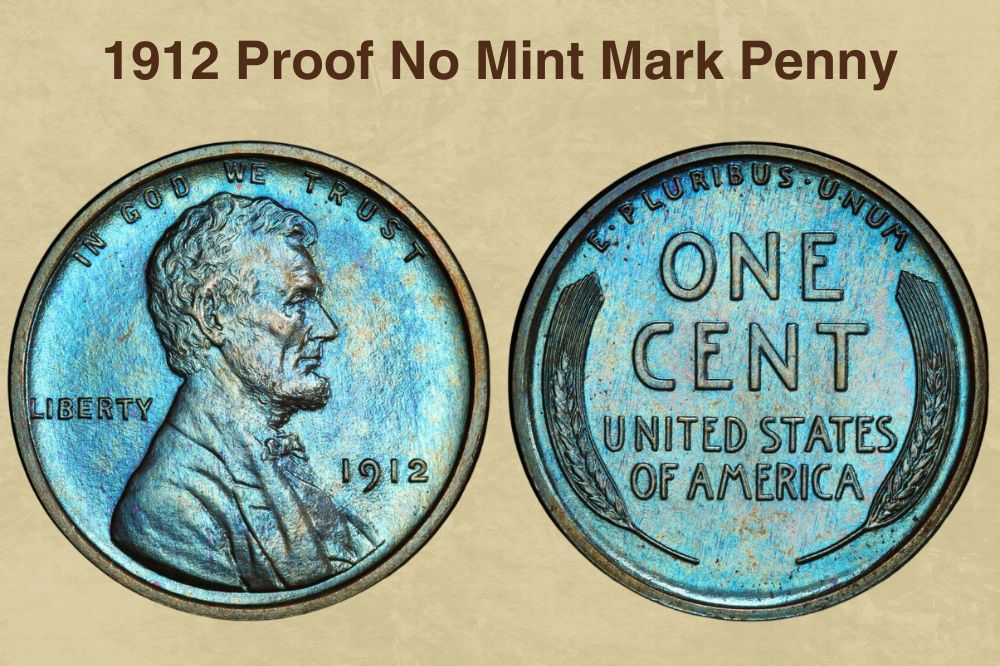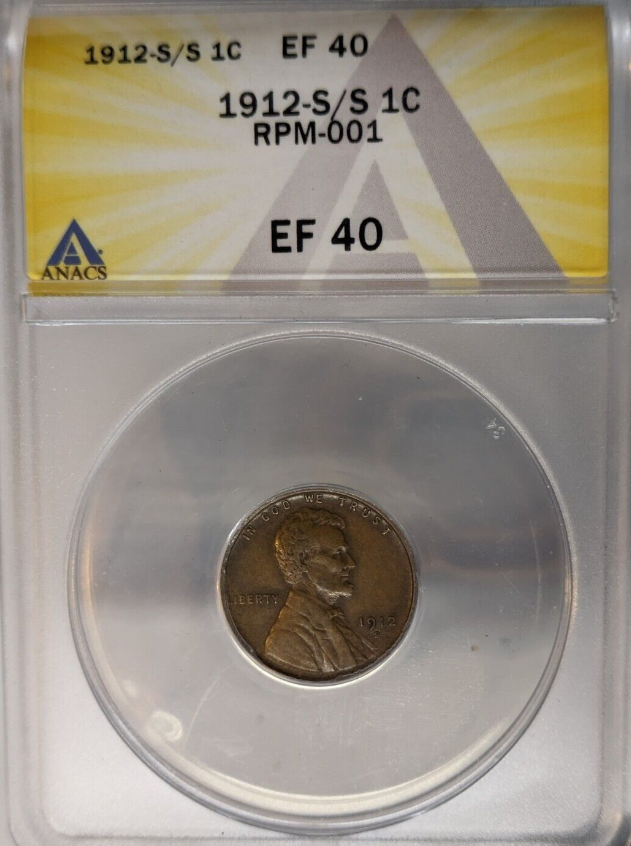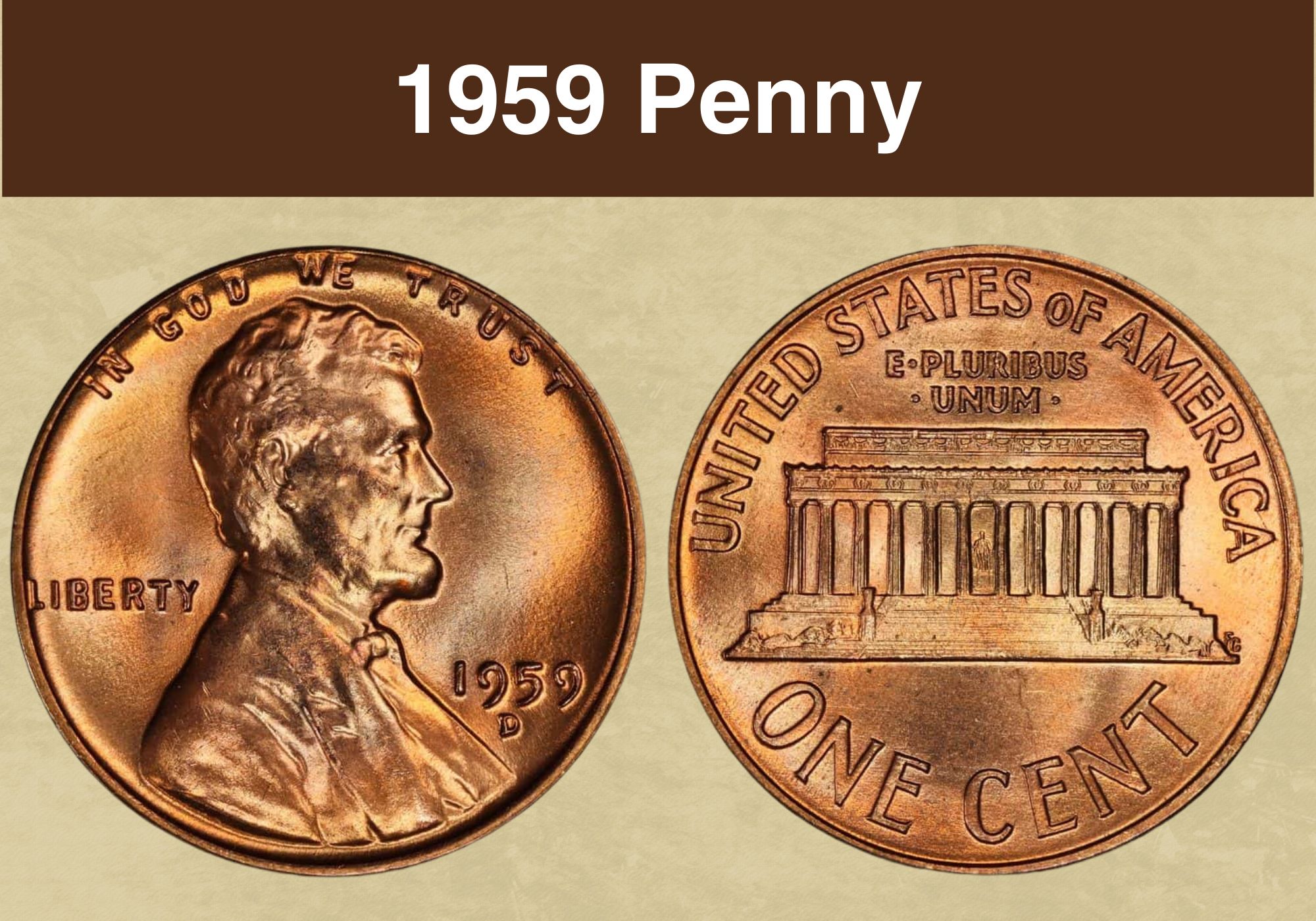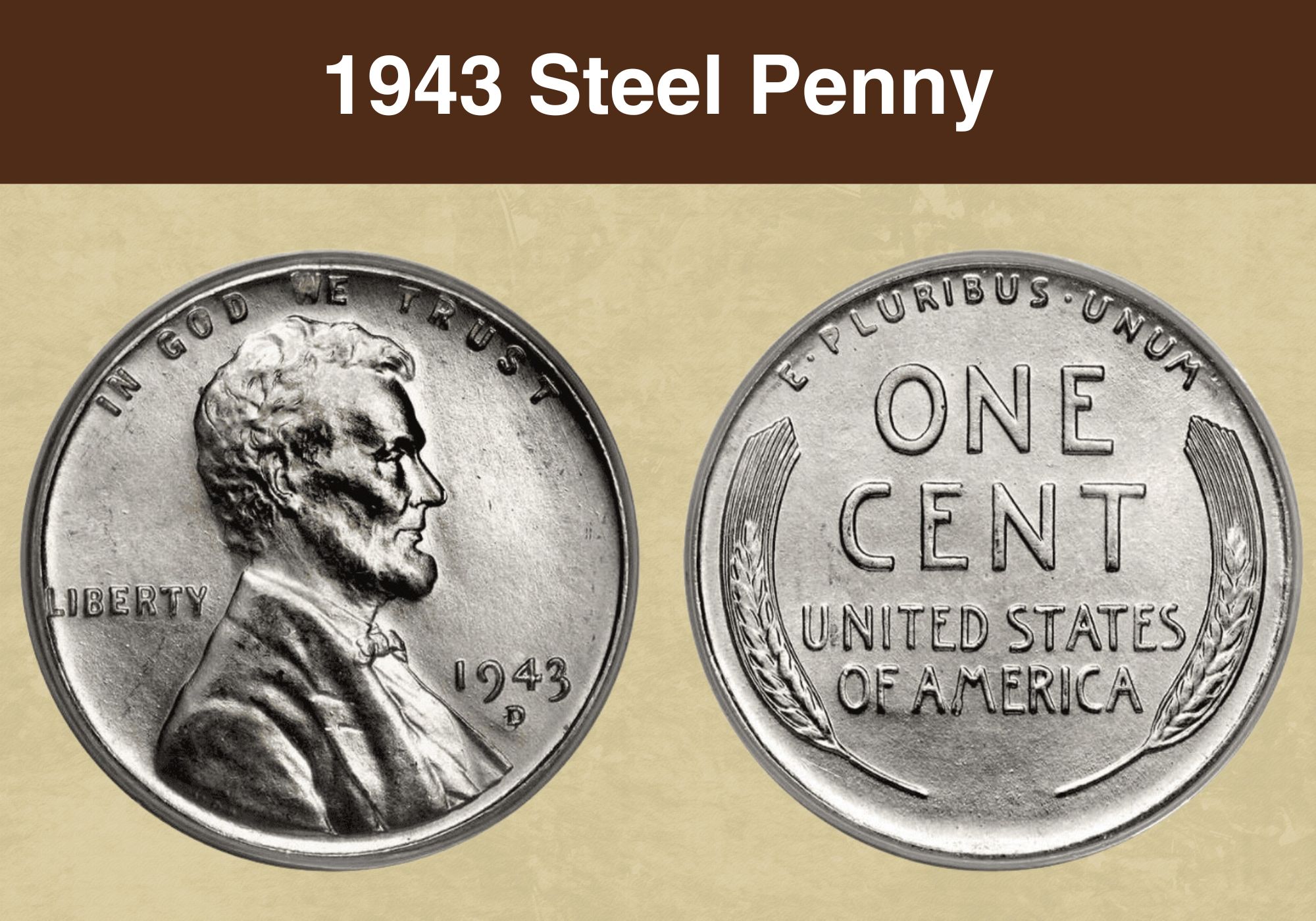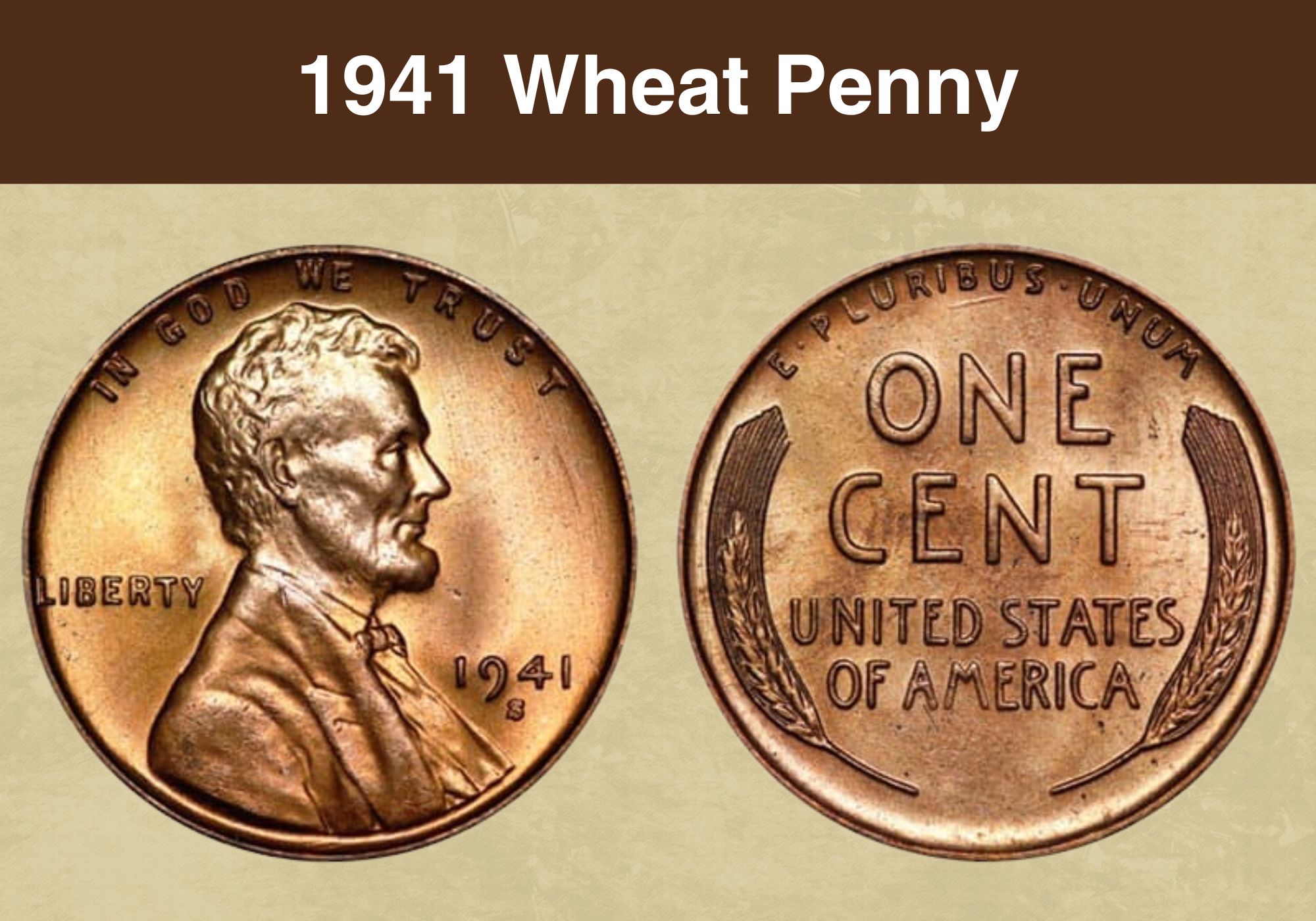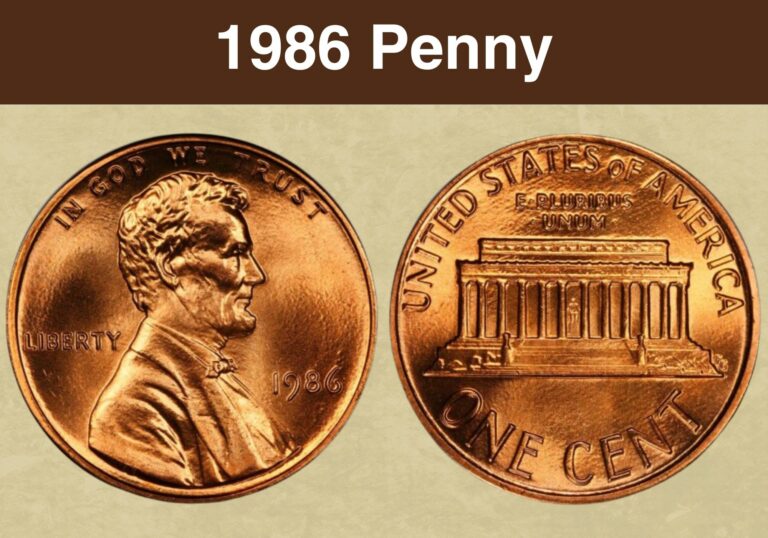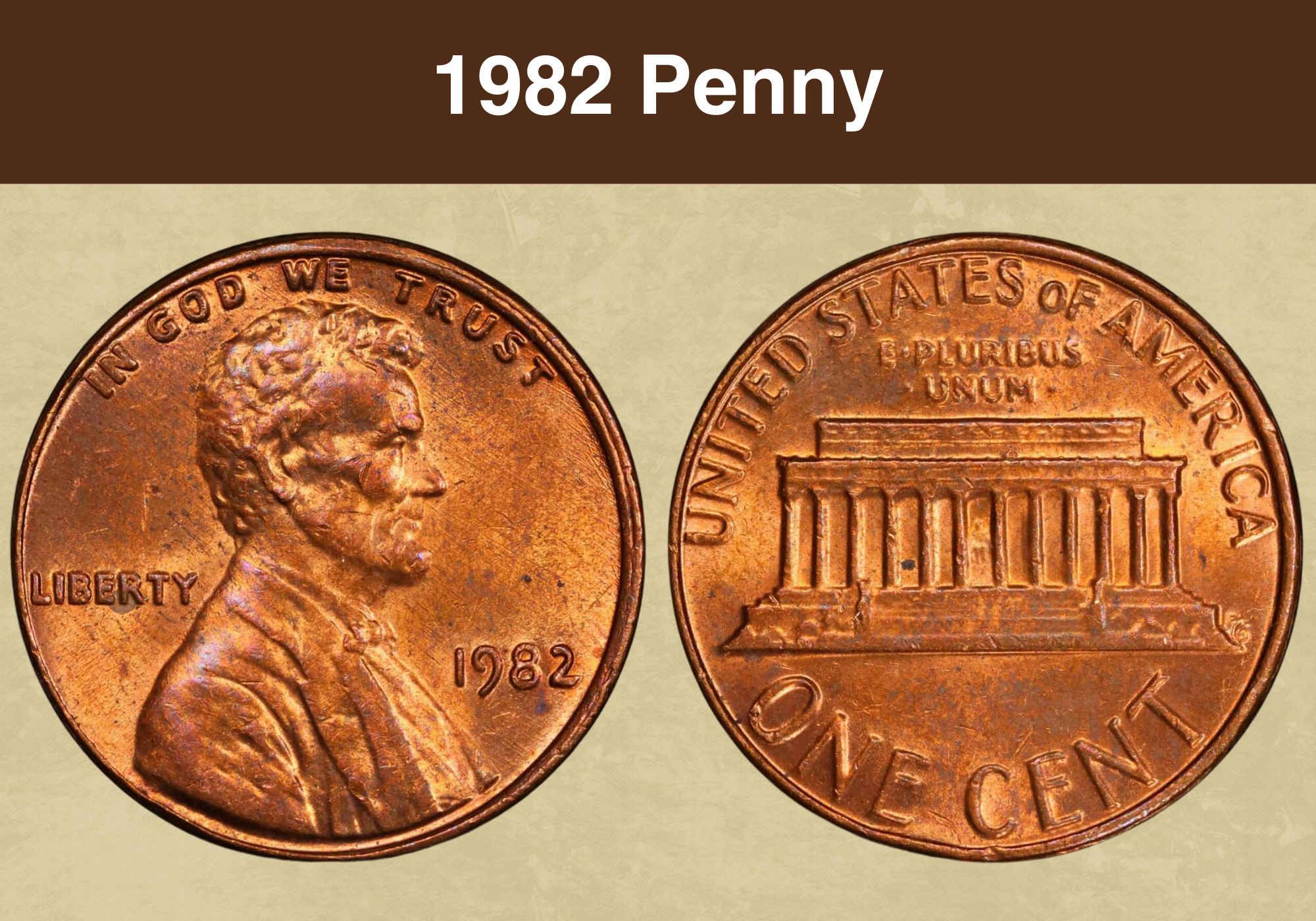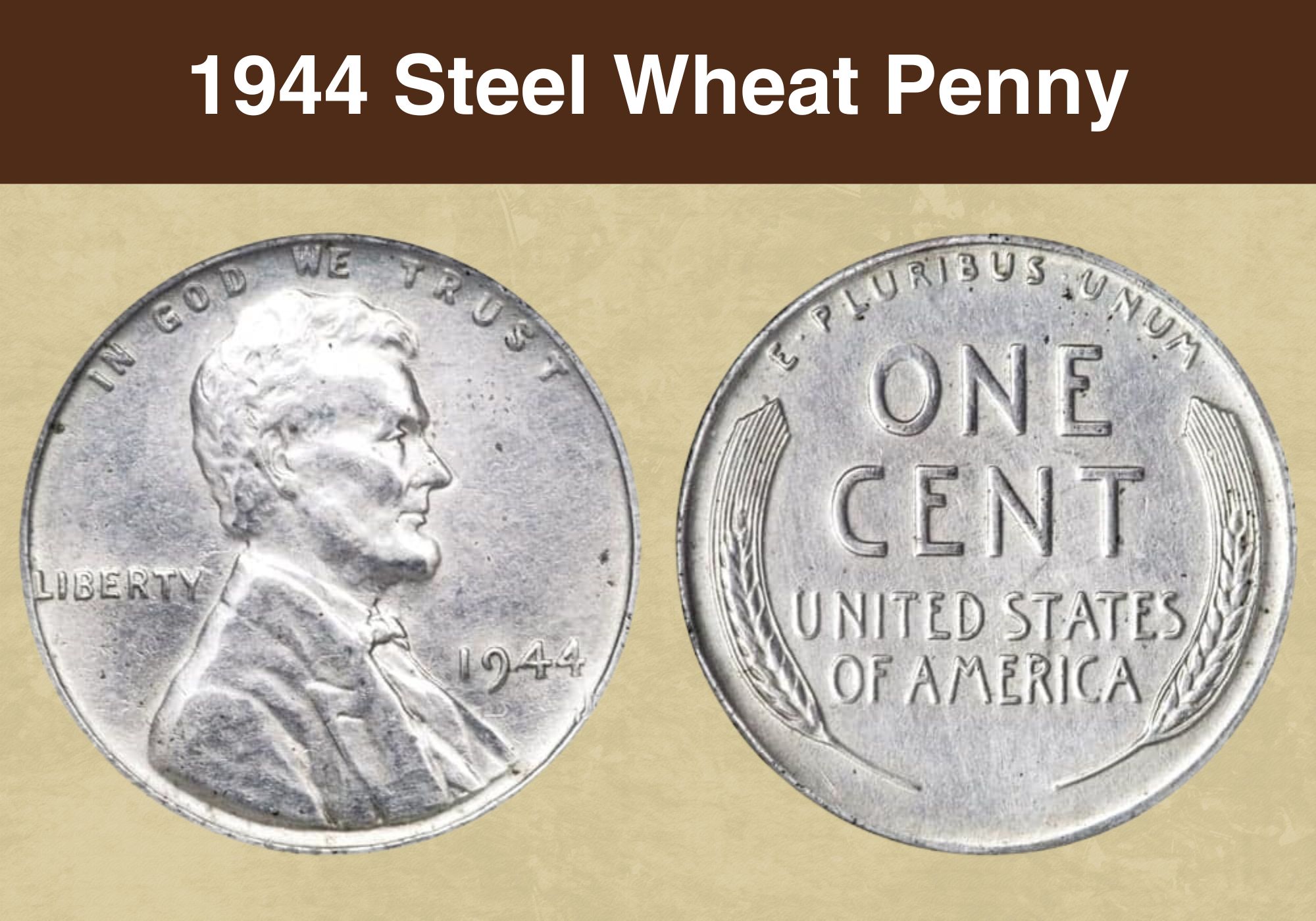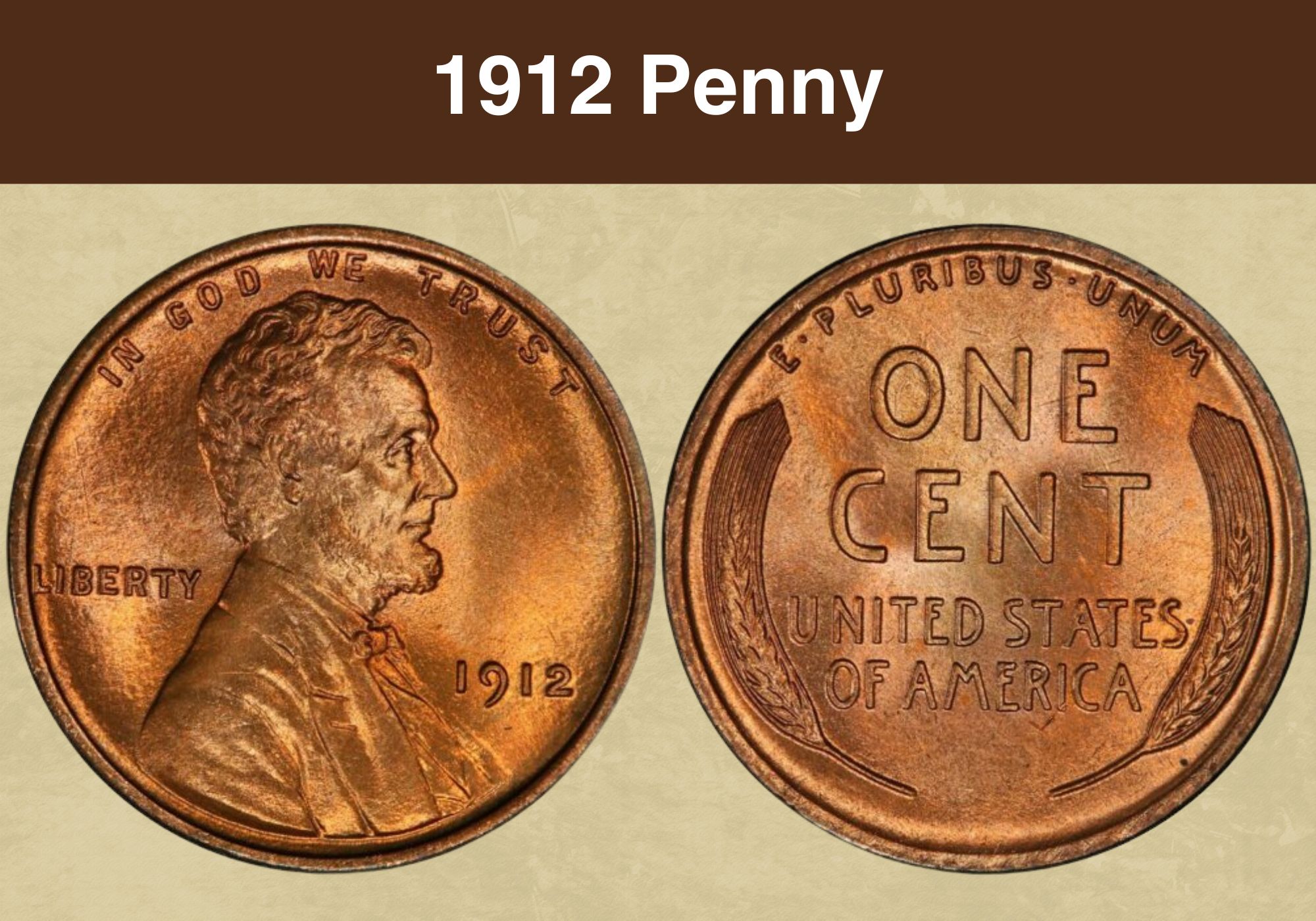
Coin Value Contents Table
- 1912 Penny Value Chart (Business Strike)
- 1912 Proof Penny Value Chart (Matte Proof)
- History of the 1912 Penny
- Features of the 1912 Penny
- 1912 Penny Grading Guides
- 1912 Penny Value Guides
- 1912-D Penny Value
- 1912-S Penny Value
- 1912 No Mint Mark Penny Value
- 1912 Proof No Mint Mark Penny Value
- 1912 Matte Proof Penny Values
- Rare 1912 Penny Errors List
- Where to Sell Your 1912 penny ?
- 1912 Penny FAQ
The 1912 Penny is a Wheat Cent, and it’s one of the earlier ones, less than a decade since the series was launched. It’s also a bona fide antique piece now that it’s over a hundred years old.
So let’s look at the 1912 Penny Value, its history, and some of the contributing salient factors. Back then, pennies were profitable coins to produce. But these days, they’re almost 3c each!
1912 Penny Value Chart (Business Strike) |
||||||
| Coin | EF/XF 45 | MS 60 | MS 64 | MS 65 | MS 66 | MS 67 |
| 1912-D Penny Brown | $110 | $225 | $400 | $675 | $1,800 | – |
| 1912-D Penny Red-Brown | – | $225 | $525 | $950 | $2,000 | – |
| 1912-D Penny Red | – | $250 | $950 | $1,200 | $6,000 | $70,000 |
| 1912-S Penny Brown | $90 | $215 | $475 | $950 | $2,600 | – |
| 1912-S Penny Red-Brown | – | $225 | $600 | $1,250 | $2,600 | – |
| 1912-S Penny Red | – | $315 | $950 | $2,400 | $18,000 | – |
| 1912 (P) No Mint Mark Penny Brown | $20 | $44 | $125 | $275 | $375 | – |
| 1912 (P) No Mint Mark Penny Red-Brown | – | $50 | $150 | $400 | $500 | $5,000 |
| 1912 (P) No Mint Mark Penny Red | – | $65 | $350 | $525 | $1,350 | $5,350 |
1912 Proof Penny Value Chart (Matte Proof) |
||||||
| Coin | PR/PF 60 | PR/PF 62 | PR/PF 64 | PR/PF 66 | PR/PF 66+ | PR/PF 67 |
| 1912 (P) No Mint Mark Matte Proof Penny Brown |
$400 |
$485 |
$900 |
$2,400 |
$4,250 |
$7,250 |
| 1912 (P) No Mint Mark Matte Proof Penny Red-Brown | $475 | $575 | $925 | $2,850 | $12,000 | – |
| 1912 (P) No Mint Mark Matte Proof Penny Red | $475 | $625 | $1,900 | $30,000 | – | – |
History of the 1912 Penny
The Pennies of the 1900s were drastically different from earlier centuries. While the reduced size and copper content were introduced in the 1850s, the new style wasn’t formalized until 1909. This was a direct result of the president’s displeasure with American currency. He had close friends within the artistic fraternity, and he agreed with their desire for prettier coins.
It’s partly why President Theodore Roosevelt pushed the mint to invite external sculptors to work on fresh designs. The first artist was Augustus Saint-Gaudens, and the penny was part of his docket. But at the time he was commissioned, he was in the end stages of cancer. When he died after redoing the Eagle (Gold $10) and Double Eagle ($20), things had to keep going.
At the president’s prompting, the US Mint hired Victor David Brenner to proceed with the penny. He was one of Saint-Gaudens’ assistants so he was familiar with his mentor’s vision. Also, he had recently done an Abraham Lincoln plaque for Gorham Manufacturing. This was key because the penny was to feature Abe Lincoln to celebrate 100 years since he was born.
Also read: 12 Most Valuable Lincoln Penny Worth Money
Features of the 1912 Penny
In numismatics, the heads side of a coin is called the obverse, the tails side is the reverse, and the thin side is the edge. This edge has a raised border called a rim or collar and sometimes has ridges called reeds. The words on a coin are referred to as mottos or legends, the images as devices, and the background as the field. The blank discs that make coins are planchets.
The Obverse of the 1912 Penny
It shows President Abraham Lincoln facing right. The motto In God We Trust is above his head and the legend Liberty is behind his back. In front of his chest, you’ll see the mint date and the mint mark. On some coins, a set of initials engraved on his shoulder cut-off identify the sculptor who designed the coin, but this signature doesn’t appear on the 1912 Penny.
The Reverse of the 1912 Penny
It shows two stalks of durum wheat arranged along the left and right rims of the coin. At the top of the coin, there’s a gap between the tips of the wheat sheaves. This space has the motto E Pluribus Unum. Below that, in the middle of the two ears of wheat, the coin’s face value or denomination is written – One Cent. And under that are the words United States of America.
Other Features of the 1912 Penny
In 1912, the Lincoln Wheat Cent was 95% Copper. The remaining metal was either zinc or tin, sometimes both. This 5% made the copper a little harder and prevented it from turning green. These pennies are 19.05mm in diameter (that’s 0.75”), have no edge reeds, and weigh 3.11g. Philadelphia Pennies from 1912 have no mint marks. They’re known as 1912 (P) coins.
Also read: 13 Most Valuable Wheat Penny Worth Money
1912 Penny Grading Guides
With older coins, it’s easy to tell when it’s a high grade because it looks so shiny and new! And with pennies, in addition to their Sheldon Scale grade – which goes from 1 to 70 – the coins are color-coded from red (RD) at the top to brown (BN or BRN) at the bottom. The middle grade is RB for reddish-brown. You should also check for any nicks or scratches.
| # | Grade |
|---|---|
| 1 | Basal State-1 |
| 2 | Fair |
| 3 | Very Fair |
| 4, 5, 6 | Good |
| 7, 8, 10 | Very Good |
| 12, 15 | Fine |
| 20, 30 | Very Fine |
| 40 | Extremely Fine |
| 50 | About Uncirculated |
| 60 | Mint State |
| 65 | Mint State |
| 70 | Mint State |
Please check our grading guides to know your coin scale, It’s the necessary step to know the exact value of your coin.
Check out now: How to Grade Lincoln Wheat Penny?
1912 Penny Value Guides
The US Mint has had several branches over the years. Some strictly made gold coins while others were eventually used for proof coins exclusively. And the mint branch that produces a coin has a direct effect on its resale price.
In 1912, the mint made pennies in Denver, San Francisco, and Philadelphia. Back then, proof coins were still being minted in Philadelphia.
1912-D Penny Value
In 1912, the US Mint made 10,411,000 Pennies in Denver. They were all business strikes or regular strikes, meaning they were intended for everyday use. And they all had the D Mint Mark. In November 2017, an MS 66 BN sold for $1,540. With four submitted to PCGS, their 2023 value is $1,800. Meanwhile, an eBay seller moved an MS 65 RB for $1,400 in 2022.
PCGS estimates its value as $900 because almost 30 have been submitted so far. They evaluate MS 65+ RD at $1,100 and MS 66 RD at $2,000. In the red space, an MS 66 RD was $34,500 in May 2005 but is down to $6,000 in 2023 because almost 40 have shown up. Half a step up, the dozen MS 66+ RDs are $18,500. The priciest penny is MS 67 RD at $60,000.
1912-S Penny Value
The San Francisco Mint made 4,431,000 Pennies in 1912 for use in daily transactions. These regular strike pennies all had the S Mark. Since these are older coins, they’re sometimes graded differently. For example, a coin graded CH BU i.e. Choice Brilliant Uncirculated, is about MS 63. A brown one sold for $2,530 in May 1999. An MS 65 RB was $5,175 in 2005.
That grade is down to $1,200 since PCGS has received more than 70 of them. As for red coins, an MS 65 RD was $27,600 in May 2003. But with over 80 submitted, these pennies are only worth $2,400 in September 2023. On the upside, slightly over a dozen exist in MS 65+ RD and MS 66 RD. In September 2023, they’re worth $3,100 and $18,000 respectively.
1912 No Mint Mark Penny Value
The Philadelphia Mint made both business strikes and proof coins in 1912, so let’s start with the regular strike pennies. The mint made 68,150,915 Wheat Cents without mint marks. And although brown coins aren’t usually worth much, this is an antique coin, so even low grades can be valuable. In February 2023, an eBay vendor sold a 1912 (P) MS 65 BN Penny for $559.
But PCGS has seen close to 40 coins in this grade, so they place its September 2023 value at $275. That said, they estimate an MS 65+ BN at $300 and an MS 66+ BN at $350. But in September 2022, an MS 66 RB was $576. With only ten samples submitted to PCGS so far, they’re worth $500 in September 2023 while the only known MS 67 RB is worth $5,000.
Up top, an MS 67 RD sold for $21,850 in August 2006. Around fifteen of these have arrived at PCGS, so they’re down to $5,350 in September 2023. But only two coins are known at MS 67+ RD, so their 2023 value is $35,000 apiece. Meanwhile, with over a hundred coins rated MS 66 RD, their value is $1,400. Half a step up, the twenty or so MS 66+ RDs go for $2,150.
1912 Proof No Mint Mark Penny Value
One of the defining traits of the Lincoln Cent was its curvy surface. But this made it hard to polish mirror-like proof pennies. So the mint made sandblasted pennies instead, sometimes called matte proofs or satin finish coins. Both the die and the planchet were sandblasted to produce a visibly grainy texture. The coins were then stored in sulphur-infused tissue paper.
This paper was meant to prevent the coins from tarnishing, but it didn’t do a very good job. That said, it often toned the coins in a way that was deeply prized and raised their value. You can identify matte proofs by their square rims and sharp detail. The mint achieved these by using extra pressure on matte proof dies and retiring them faster to maintain design clarity.
Also read: 17 Most Valuable Indian Head Penny Worth Money
1912 Matte Proof Penny Values
In 1912, the Philadelphia Mint made 2,145 Matte Proof Pennies without mint marks. A PR 67 BN was $9,500 on eBay in 2018. Only two more have shown up so the three are each worth $7,250 in 2023. Meanwhile, a PR 66+ RB sold for $14,100 in August 2014. Today, five coins are known in that grade, so they’re worth $12,000. PR 67 RBs are a little trickier to estimate.
This is because PCGS hasn’t received any, but NGC sold some for roughly $1,000 to $3,500. That said, in the highest echelon, a PR 66 RD sold for $37,600 in February 2016. PCGS has received three coins in this grade, so it estimates their value as $30,000 in September 2023. NGC sales are priced a little lower, fetching between $9,000 and $25,000 for PR 66 RDs.
Rare 1912 Penny Errors List
The mint can make hundreds of coins in a minute, so a few of them are bound to have errors. And these mint mistakes can raise the resale value of a coin, so within the first month of any coin’s release, experts search for first-strike errors and assign them FS numbers. The 1912 Penny didn’t have any, but look out for flaws like wrong planchets, cud breaks, or die clashes.
1912-S/S Penny RPM Error
RPM means re-punched mint mark. In the old days of coin minting, the mint mark was the last detail added to a die, and it was placed by hand. This left it susceptible to doubling if the person punching it wasn’t careful. The second strike would land a little to the left or right and you’d see bits of the earlier mint mark underneath. A VF 35 Penny sold for $46 in 2018.
1912-S Penny Inconsistent Obverse Strike Error
Due to budget cuts at the mint, dies were used for much longer than they should be. As a result, coins can be divided into EDS (Early Die State) and LDS (Later Die State). On San Francisco Pennies, some LDS coins have a softer strike on the right, so that part of the coin fades faster. The 2 in 1912 and the US in Trust are blurry while the final T is often missing.
1912-D Penny Over-Polished Late Die State
The difference between EDS and LDS Pennies is also visible on Denver coins. Here, it’s common to find mild die cracks on LDS Pennies. Sometimes, the mint re-polishes the dies to clarify details. But this leads to erosion on the lower right of the coin. Particularly on the rim, neck, and Lincoln’s lapel. The lettering also appears bloated, especially Liberty and God We.
Also read: 11 Most Valuable Wheat Penny Errors
Where to Sell Your 1912 penny ?
Now that you know the value of your coins, do you know where to sell those coins online easily? Don’t worry, I’ve compiled a list of these sites, including their introduction, pros, and cons.
Check out now: Best Places To Sell Coins Online (Pros & Cons)
1912 Penny FAQ
How Many Pennies Were Made in 1912?
In 1912, a total of 82,997,205 Pennies were made in the three mint branches, San Francisco, Denver, and Philadelphia. These included 2,145 Matte Proof Pennies coined in Philadelphia.
What is the 1912 Penny Made Of?
The 1912 Penny was French Bronze i.e. 95% copper with 5% zinc, tin, or a mix of both metals.

